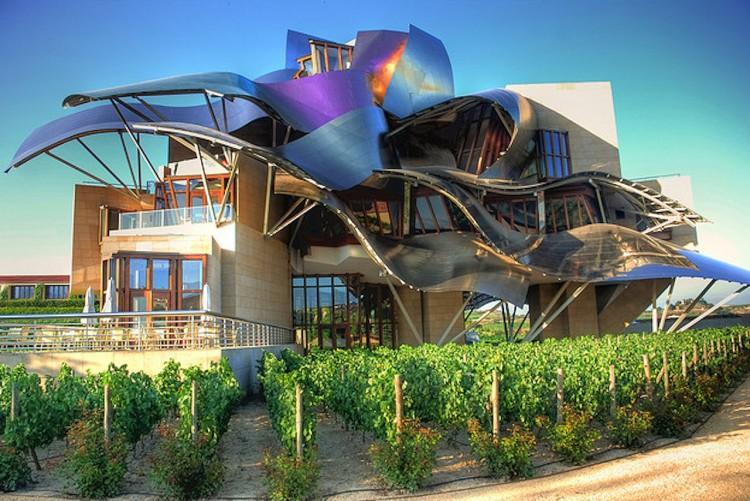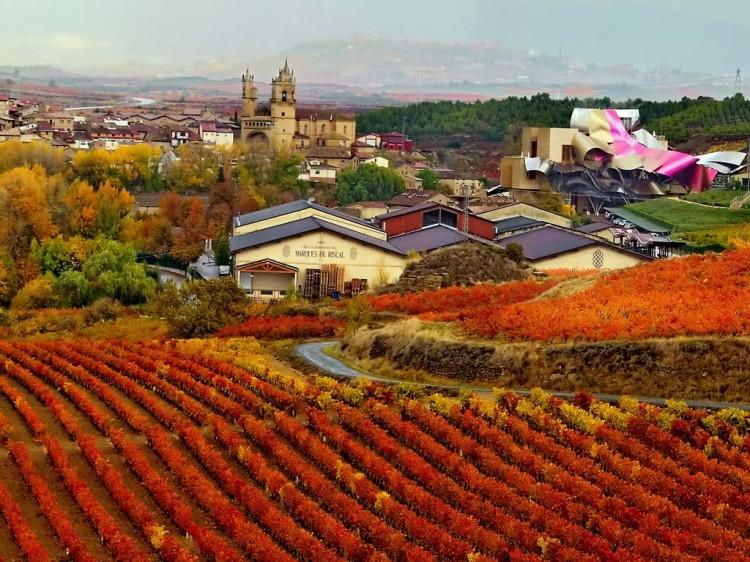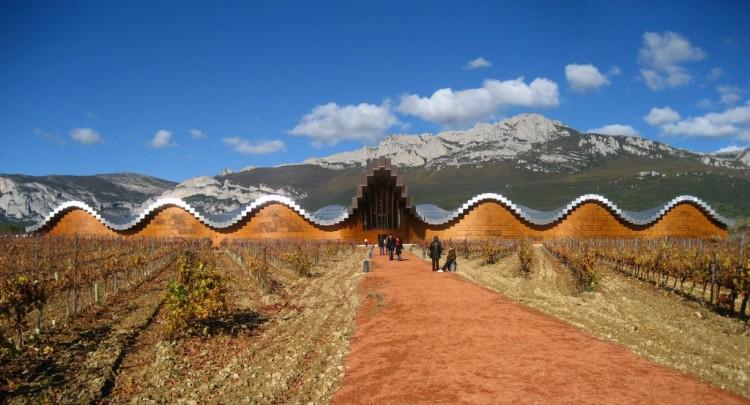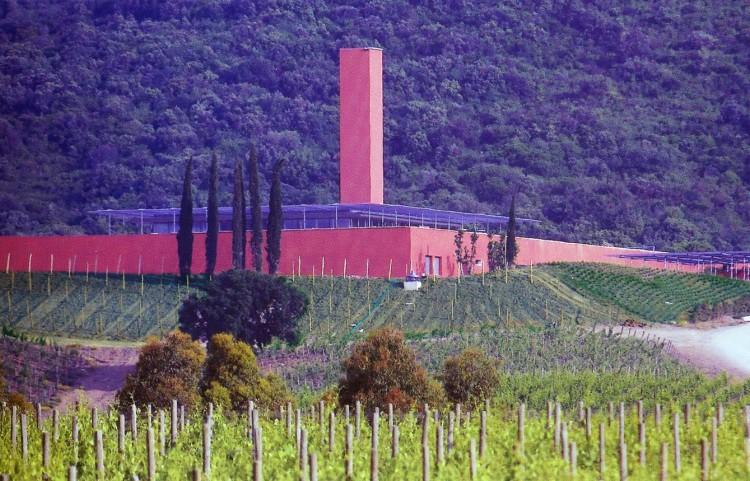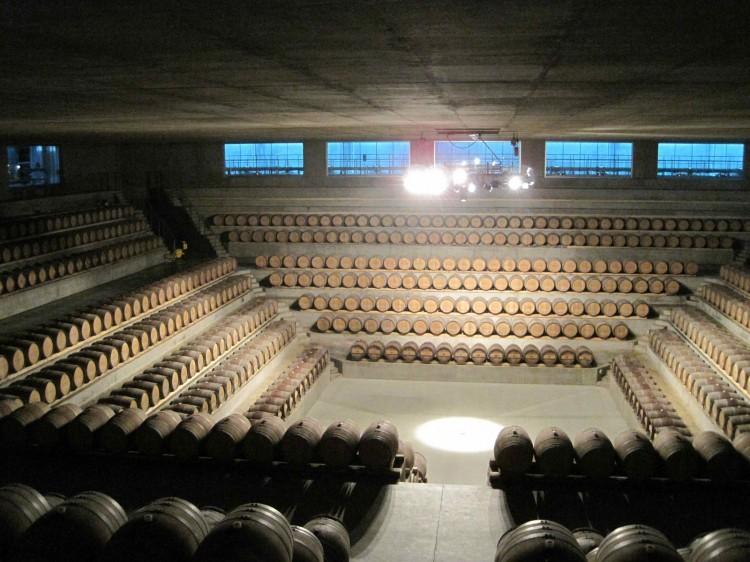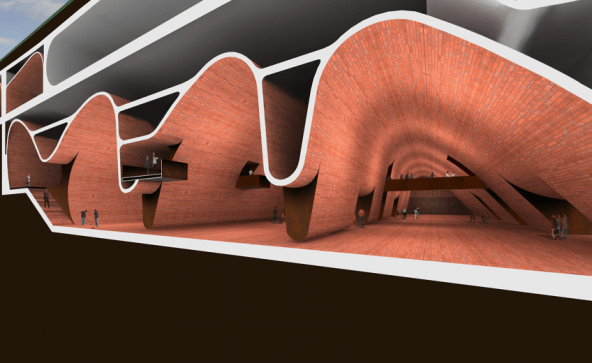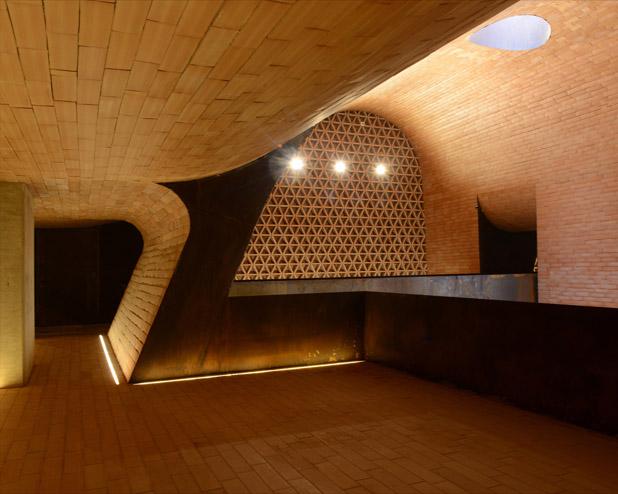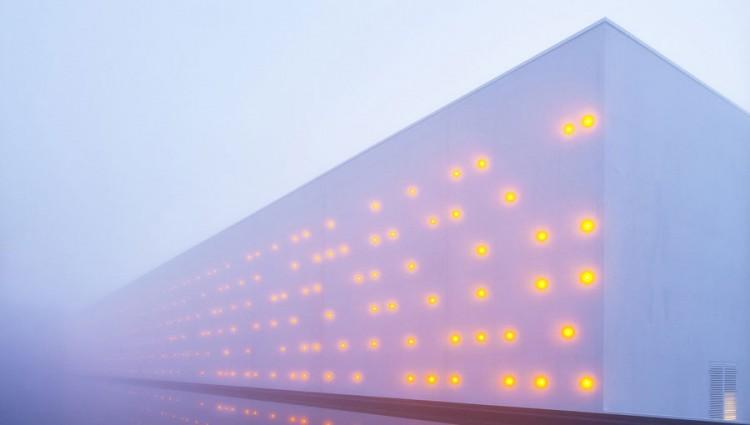Double Holiday
Combining a passion with simply being a tourist makes a trip fun and meaningful at the same time. Psychologists would agree when I say that doing meaningful things only is boring, and having fun only is boring as well. One needs a tailor-made combination of both. So how about starting to surf the net and look for something you will love to see, and experience too?
Wine Pleasure – Star Architects
How about wine architecture? This is something which became big in the last 15 years, more or less, and has produced outstanding buildings all over the world. Famous architects like Frank Gehry, Santiago Calatrava, Renzo Piano have done an excellent job at designing new wineries which can now be visited and enjoyed together with a wine tasting tour too. Here are the most spectacular wineries in the world.
1. Marque de Riscal, Rioja (Spain)
Canadian architect Frank O.Gehry, designer of the Guggenheim Bilbao Museum, is behind the highly unusual project of the Marque de Riscal winery, in the Rioja wine route. The winery is the oldest and most traditional of the Rioja, open since 1860 and famous for its pioneering, innovative, non-conformist approach. The explosion of color and shapes created by Gehry creates a movement through the forms which stands out but matches the environment at the same time. The facades of stone and wood windows contrast and dialogue with the traditional buildings of the nineteenth century.
2. Bodega Ysios, Rioja (Spain)
Santiago Calatrava is the mind behind the Bogeda Ysios, also in the Rjoia Alavesa area. The building is inspired by the shape of oak wine barrels and, with its rolling wooden contours seamlessly integrated into the foothills of the Sierra de Cantabria mountains of Spain, is matching the landscape, and autonomous at the same time. The result is spectacular.
3. Rocca di Frassinello, Tuscany (Italy)
Renzo Piano (author of the Centra Pompidou in Paris, the Shard in London and the New York Times building in New York to name just a few) designed the Rocca di Frassinello Vineyard in Tuscany. The most impressive part of the building is far out of sight, well-hidden in the ground:it’s the astonishing wine cellar, where hundreds of barrique barrels are stored while the wine is aging. Similar to a Roman theatre, the structure consist of stairs leading towards the center “stage” at the bottom of the cellar, a huge room with blank concrete walls and no pillars, stabilized by gigantic concrete beams anchoring in the surrounding hill. On the surface, the big terrace near the thin tower, according to Piano, depicts a flying carpet, which has landed on top of the scenic hills.
4. Petra Wine, Tuscany (Italy)
Near the ancient Tuscan of Suvereto and designed by Swiss architect Mario Botta, Petra Wine combines modern looks with Greek and Etruscan inspiration.
5. Opus One, Napa Valley (US)
American Architect Scott Johnson (author of the MGM tower in Los Angeles and the Museum Tower in Dallas) designed the Opus One winery in Napa Valley in the 80s, and so started a revolution in the wine industry. “More landscape than architectural statement” was his motto, and this resulted in an elliptical facade emerging from the grass and conveying a sense of quiet grandeur. It’s a low profile mixture of tradition and technology which set the basis of a new style of wine architecture.
6. R. Lopéz De la Heredia, Rioja (Spain)
In celebration of its 125th anniversary, R. López de Heredia, a venerable winery based in Spain’s Rioja region, hired Pritzker Prize winner Zaha Hadid to design a pavilion. Here is the result.
7. San Casciano Val di Pesa – Antinori winery, Tuscany (Italy)
Marco Casamonti, who is author of the Green Energy Labotary in Shanghai, the “Meravigliosa” island in “The World” in Dubai, and more, recently designed the Marchesi Antinori winery in San Casciano Val di Pesa. He managed to combine the skills of Florence artisans with modern technology, sustainability, and above all beauty – the beauty coming from the combination of nature and good design.
8. Ballande et Meneret, Bordeaux (France)
Ballande et Meneret, by Patrick Baggio and Anne Piechaud, is entirely lit by LED lights. It looks different depending on the time of the day.
9. Lapostolle Clos Apalta, Colchagua Valley (Chile)
In 1994, Alexandra Marnier Lapostolle, scion of the French wine- and spirit-making family that produces Grand Marnier, and her husband, Cyril de Bournet, began growing grapes and making wine in Chile’s fertile Colchagua Valley. Ten years later, they completed a centerpiece winery on a hill overlooking their estate. Lapostolle Clos Apalta, designed by Amercanda Architects.
10. Le Mortelle – Marchesi Antinori, Tuscany (Italy)
If you look for stunning design in an environmentally friendly setting, go to Le Mortelle, in Tuscany.
The new cellar is located atop a low hill which overlooks the property. The cellar is, in large part, underground in order to minimize its impact on the environment and was constructed using natural materials, taking maximum advantage of the rocks below ground to regulate cellar temperatures.
The structure, cylindrical and largely underground, is laid out on three levels: within its spaces all of the various phases of the production of the wines – from the arrival of the grapes to their fermentation and aging, the stocking of the wine and the aging in small oak barrels – takes place.
